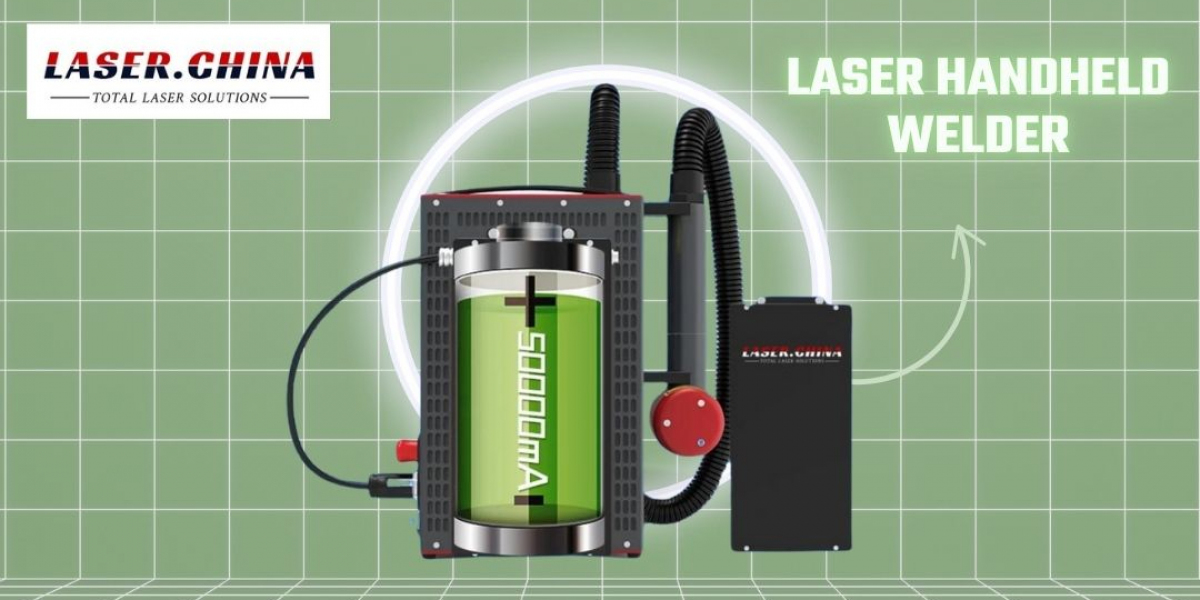Handheld fiber laser welding and cutting machines are advanced tools that utilize high-intensity fiber laser technology to perform precise welding and cutting tasks. These machines have gained significant popularity in various industries due to their efficiency, versatility, and ability to produce high-quality results. Understanding how these machines operate and their advantages can help businesses determine their suitability for specific applications.
1. Operation of Handheld Fiber Laser Welding and Cutting Machines:
The operation of handheld fiber laser machines involves several critical components and steps:
Laser Source: The core of these machines is a fiber laser source that generates a high-quality, concentrated laser beam. Fiber lasers are known for their efficiency, low maintenance, and excellent beam quality, making them ideal for both welding and cutting tasks.
Beam Delivery System: The laser beam is delivered through flexible fiber optic cables, which allow operators to easily maneuver the machine in various environments and reach difficult-to-access areas.
Focusing the Laser Beam: The laser beam is focused onto the material’s surface using lenses or mirrors to create a small, intense spot. This concentrated energy can reach extremely high temperatures, capable of melting or vaporizing the material at the joint or cut line.
Welding or Cutting Process: For welding, the operator moves the handheld device along the joint of the materials, heating the edges until they melt and fuse together. For cutting, the laser beam is guided along a predefined path, effectively melting or vaporizing the material to create clean edges.
User Controls: Most handheld fiber laser machines are equipped with adjustable settings for power, speed, and pulse duration, allowing operators to customize the welding or cutting parameters based on the specific materials and thicknesses involved.
2. Advantages of Handheld Fiber Laser Welding and Cutting Machines:
Handheld fiber laser welding and cutting machines offer several significant advantages that make them attractive for various applications:
Portability and Flexibility: One of the primary benefits is their portability. These machines are lightweight and easy to transport, making them ideal for onsite jobs and fieldwork. Their flexibility allows operators to work in tight spaces or awkward positions without difficulty.
High Precision and Quality: The focused nature of the laser beam enables extremely precise welding and cutting, resulting in clean, high-quality welds and cuts. This level of accuracy is crucial in industries such as electronics, automotive, and aerospace, where tight tolerances are essential.
Minimal Heat Affected Zone (HAZ): The localized heating of the laser minimizes the heat-affected zone, reducing the risk of warping or compromising the mechanical properties of the surrounding material. This feature is particularly beneficial when working with thin or sensitive materials.
Reduced Distortion: Handheld fiber laser machines produce significantly less distortion compared to traditional welding and cutting methods. The rapid melting and solidification process ensures that the material retains its shape and structural integrity.
Versatility: These machines can effectively cut or weld a wide range of materials, including metals (like steel, aluminum, and copper), plastics, and some composites. This versatility makes them suitable for diverse applications across multiple industries.
Cleaner Work Environment: Laser welding and cutting generate minimal fumes, spatter, and debris compared to conventional methods. This leads to a cleaner workspace, reducing the time and effort needed for post-weld or post-cut cleanup.
3. Applications of Handheld Fiber Laser Welding and Cutting Machines:
The versatility of handheld fiber laser machines makes them suitable for numerous applications, including:
- Automotive Repairs: Used for welding and cutting components in automotive bodywork, exhaust systems, and other parts requiring precision.
- Metal Fabrication: Ideal for quick modifications, repairs, and intricate cuts in metal fabrication shops.
- Aerospace Maintenance: Suitable for lightweight components and assemblies, ensuring high standards of accuracy and quality.
- Electronics Manufacturing: Employed in assembling small parts, circuit boards, and connectors with high precision.
- Construction: Perfect for onsite cutting and welding of metal structures, pipes, and equipment.
Conclusion:
In summary, handheld fiber laser welding and cutting machines represent a significant advancement in both welding and cutting technology. Their portability, precision, and versatility make them invaluable tools across various industries. By understanding how these machines operate and the advantages they provide, businesses can enhance their productivity, improve the quality of their welds and cuts, and ultimately achieve greater operational efficiencies. Investing in handheld fiber laser technology positions organizations to succeed in an increasingly competitive market, where precision and efficiency are paramount.









